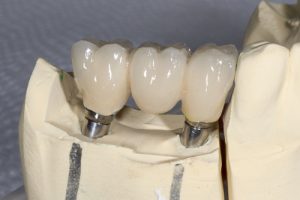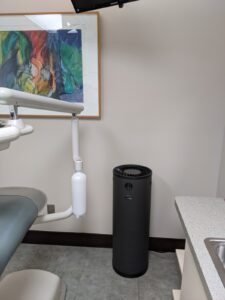 We’ve discussed how we can replace a single lost tooth with a dental implant, or provide a full set of fixed dentures. However, what about multiple missing teeth? We can use implant technology to secure a long lasting and lifelike dental bridge. How do implant bridges work? What makes them different from traditional ones?
We’ve discussed how we can replace a single lost tooth with a dental implant, or provide a full set of fixed dentures. However, what about multiple missing teeth? We can use implant technology to secure a long lasting and lifelike dental bridge. How do implant bridges work? What makes them different from traditional ones?
Try Our Implant Bridge Quiz
- True or False: A bridge can replace one or more lost teeth.
- True or False: You don’t need to lose additional tooth structure.
- True or False: If you don’t have enough jawbone tissue you may need bone grafting.
- True or False: They can last longer than traditional bridges.
Answer Key
- True. A bridge can be used to replace one to three teeth in a row. However, if you have multiple missing teeth that are spread out across the arch, we can also provide a partial prosthetic.
- True. Traditional bridges consist of the replacement tooth/teeth with dental crowns on either side. This means the natural teeth on either side of the gap in your smile must lose tooth structure to accommodate the crowns, which anchor the new teeth in place. However, with dental implants we can insert implant posts directly into the jawbone. They act as natural roots and don’t require other natural teeth to lose additional structure.
- True. In order to receive a dental implant, you must have enough jawbone tissue to support the posts. If you don’t, we can refer you to a specialist for a bone grafting procedure, which can allow patients who have lost jawbone density to receive an implant-supported bridge.
- True. A traditional dental bridge lasts from about 10 to 15 years before requiring adjustment or replacement. However, an implant-supported bridge can last for a lifetime with proper care and attention.




Recent Comments